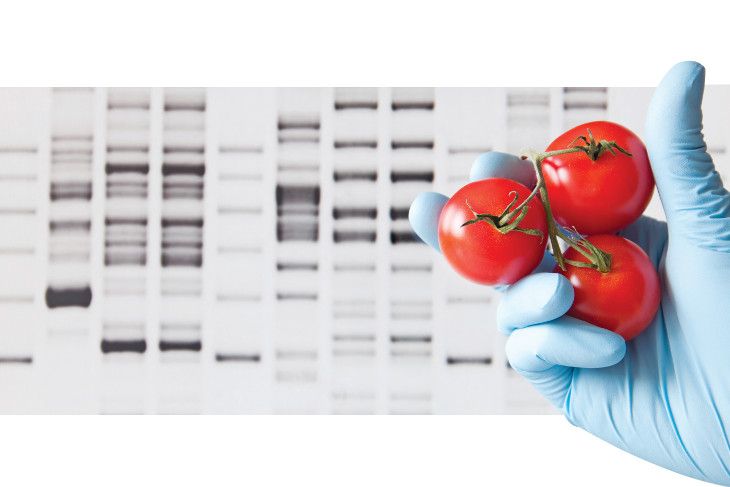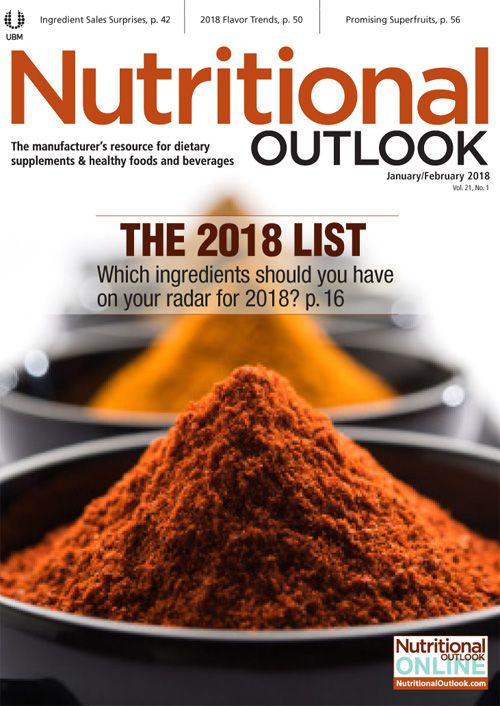Ready for GMO 2.0?
Even as non-GMO certified products continue to skyrocket in popularity, new gene-editing techniques are causing ripples in the gene pool.
Photo © iStockphoto.com/zmeel

Over the past few years, the conversation around non-GMO has evolved from fringe topic to the centerpiece of many a natural product line-and consumers are eating it up. Megan Westgate, executive director, the Non-GMO Project (Bellingham, WA), points to data from Nielsen indicating that in 2016, 50% of consumers surveyed in North America said they actively avoid GMOs. In that same year, she adds, Consumer Reports found that as many as 72% of consumers think it is important to avoid GMOs, with 40% reporting that they look for non-GMO labels to help them make purchasing decisions.
In spite of the growing prevalence of non-GMO verified products, new genetic engineering techniques-or “GMO 2.0”-may muddy the waters.
Transparency Counts
Westgate says today’s consumers want to “shop their values and are increasingly demanding greater accountability and transparency from the companies that produce and supply their food and supplements.” She adds that shoppers are more likely to make purchasing decisions that not only benefit their health, but also the livelihood and health of the farmers and animals that provide them. All this, she notes, has led to more companies seeking third-party certifications.
The entire supply chain is evolving in response to the uptick in interest in non-GMO. Steven Taormina, business unit manager at NSF International’s Consumer Values Verified division (Ann Arbor, MI), says “non-GMO verified ingredients continue to become more readily available throughout the supply chain, which is global.” Certainly, it’s easier than it has ever been to reap the benefits of a non-GMO label claim.
By the Book
For companies keen on earning the butterfly seal from the Non-GMO Project Verification Program, Westgate says they must undergo an annual evaluation with one of the Non-GMO Project’s independent technical administrators (TAs). She explains, “The TAs analyze ingredient statements from suppliers, ensure that proper material handling protocols are in place, and determine whether ingredient testing and/or facility inspections are needed.” Once a product is determined to be compliant, the TA issues a certificate specifying that the product is eligible to feature Non-GMO Project Verified mark.
NSF International, for its part, offers Non-GMO Project Verification as well as the organization’s own Non-GMO True North Certification. As Taormina explains: “Both programs require an application review, which includes specific product recipes, ingredients, and manufacturing practices. Depending on the risk, some manufacturing facilities may be inspected. Both programs ensure the integrity of the products’ non-GMO ingredients with a maximum allowable GM content of 0.9%.”
According to Taormina, NSF International’s verification programs are currently the only two programs accepted by Whole Foods Markets’ standards programs to make a label claim that a product is non-GMO. It may seem rigorous, but that’s the price of doing business with health- and environmentally conscious consumers in 2018.
GMO 2.0
Plus, there are bigger fish to fry. Westgate states that the growing threat of GMO 2.0, is a supply-chain issue to keep an eye on. GMO 2.0 includes such genetic engineering techniques as synthetic biology, gene-editing, and Clustered Regularly Interspaced Short Palindromic Repeats (CRISPR), though industry opinion about whether CRISPR is a viable non-GMO technique or can be considered GMO 2.0 is somewhat split.
Says Taormina: “CRISPR and other ‘gene-editing’ technologies will introduce many new varieties of crops in the coming years.” He says apples and potatoes, for instance, have been modified to “silence” the expression of certain genes for various purposes.
But GMO 2.0 isn’t your run-of-the-mill gene-editing, Westgate adds. “Unlike traditional genetic engineering, these techniques are often not ‘transgenic,’ meaning the products of GMO 2.0 don’t contain genes from multiple species (e.g., a mix of bacteria, viruses, animal and plant genes, etc.) the way ‘traditional’ GMOs do.”
This is a big problem, she adds, because while some products of these technologies may not be transgenic, “they are still products of biotechnology as defined by the Codex Alimentarius...the Codex definition is the same one used by the Non-GMO Project. Besides the fact that many products of GMO 2.0 are being sold as ‘non-GMO,’ an additional supply chain challenge with these types of ingredients is that testing labs have not yet developed commercial tests for them.”
So, how can manufacturers navigate such a hard-to-pin problem? “Biotech companies are making a concerted effort to distance themselves from the consumer and manufacturer rejection of GMOs by claiming that these new techniques are not actually genetic engineering,” says Westgate. “Until such tests are developed, the Non-GMO Project Standard requires affidavit evidence for inputs at risk for being products of GMO 2.0. In this way, we are playing a leadership role in helping to protect the supply chain from unchecked contamination by these ingredients. This will support manufacturers in meeting consumer expectations, ensuring that the ingredients they are using are truly non-GMO.”
Navigating the path forward is easier said than done. Notes Taormina: “How the USDA and other global government agencies approach the approval and labeling of these so-called GMO 2.0 crops will have a large impact in 2018 and beyond.”

Prinova acquires Aplinova to further increase its footprint in Latin America
April 7th 2025Prinova has recently announced the acquisition of Brazilian ingredients distributor Aplinova, which is a provider of specialty ingredients for a range of market segments that include food, beverage, supplements, and personal care.

























